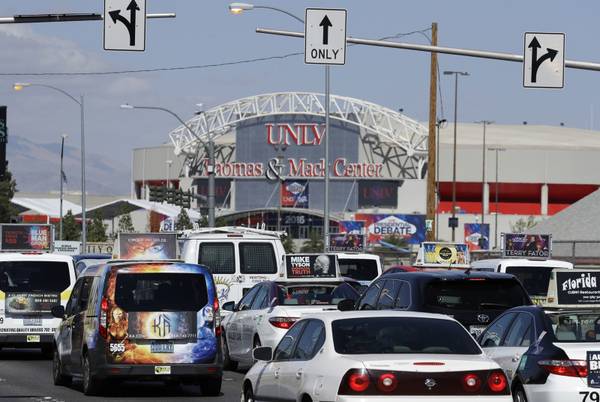Reduced travel and auto emissions during the pandemic last year were not enough to eliminate air quality issues in Clark County.
Las Vegas Valley residents still experienced 96 days of elevated levels of air pollution in 2020, according to a new report by the Environment Nevada Research and Policy Center, Frontier Group and U.S. PRIG Education Fund.
In the Las Vegas-Henderson-Paradise area, there were 81 days of elevated ozone — the most in the state — and 32 days with elevated levels of particulate matter, such as dust or smoke. Some days had both types of pollution.
White Pine County and Carson City had the second- and third-most elevated ozone days in Nevada, 62 and 49, respectively.
The study affirms there is no healthy level of air pollution, which increases the risk of health issues like asthma — issues that disproportionately impact people of color and low-income people in Las Vegas, as previously reported by the Sun.
“Even one day of breathing in polluted air is dangerous for our health,” Eve Lukens-Day, global warming solutions associate with the Environment Nevada Research and Policy Center, said in a statement. “Our leaders need to act swiftly to zero out pollution from all aspects of our lives. When they do, we’ll all breathe easier.”
In a statement, Matt Casale, environment campaigns director with the U.S. PIRG Education Fund, said the top source of air pollution is transportation. But even as Americans drove less at the start of the pandemic — traffic dropped more than 40% in the final two weeks of March 2020 — air quality remained poor.
Clark County saw several days of excessive ozone this summer, largely due to smoke drifting into Nevada from wildfires in California. Ground-level ozone peaks from April 1 to Sept. 30 in Las Vegas. As of today, there were 28 days of excessive ozone this year in the Las Vegas area.
Solutions from the Environment Nevada Research and Policy Center include stronger infrastructure legislation to spark greener transportation projects. The report was released as Congress is assessing the Build Back Better Act, which would create jobs in solar and other noncarbon forms of energy.
“As our driving has picked up in 2021, you can be sure our vehicle pollution has kept pace,” Casale said. “If we want to make a dent in these terrible numbers and save lives, we have got to wean ourselves off of burning fossil fuels to get around.”

